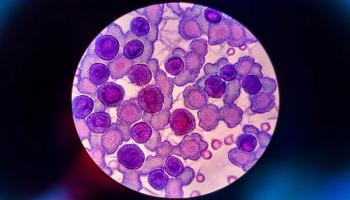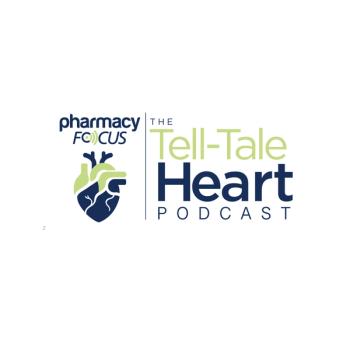
Optimizing Care Model Bolsters Evidence for Technician Involvement in Delivery of Pharmacy Services
Technicians and pharmacists both agreed that the Optimizing Care Model allowed the pharmacy to implement entirely new services and expand the number of patients who were receiving existing services.
Research continues to demonstrate the efficiency and efficacy of pharmacy technicians taking on expanded roles and new challenges. In the broadest sense, technician roles can be classified into direct patient care service support and medication distribution support.
Recent evidence of technician involvement in direct patient care support is growing, and includes involvement in medication reconciliation, vaccine screening and administration, and various medication therapy management activities under the supervision of a pharmacist.1-3
Central to technician participation is the need for job redesign and adjustments to workflow. This suggests that the well-known moniker of “tech-check-tech” be superseded by a wholesale change in philosophy. The philosophy must be built around every team member, including technicians, performing at the top of their skills level, which results in greater understanding of roles, improved communication, and better patient care.4
Recently, researchers implemented and tested such a model, and dubbed it the Optimizing Care Model.5 This study seized upon previous evidence that technical tasks of medication distribution had not been consistently delegated and that past models or re-specifications of job duties had not yet captured pharmacy team member perspectives and experiences following implementation. The Optimizing Care Model is an innovative approach to community pharmacy practice that expands clinical service delivery and fosters collaboration across health settings through task delegation.
In this case, the pharmacist is placed in direct patient care roles, including provision of medication therapy management, point-of-care testing, and health counseling. Team-based delegation to technicians helps make this model sustainable. It borrows from a concept known as systems engineering, which seeks to minimize repetition, improve coordination of activities, and promote continuous quality improvement.6
Initial evaluation of the model’s implementation saw a number of successes. Interviews of technicians and pharmacists who participated in a pilot of the project saw congruence in their shared experiences. That is to say they were in accord with respect to the positive aspects of the program.
It is salient that pharmacists and technicians shared the same views about a new model of care. If either of the 2 parties finds the model unworkable or not worth the effort, its sustainability is jeopardized.
Technicians and pharmacists alike reported rejuvenation at their jobs: pharmacists from the ability to and increasing effectiveness in delegating, and technicians feeling the confidence and self-worth from being afforded opportunities to perform at a higher level.
A substantial benefit of the model not to be overlooked is the concurrent improvement in quality of work life by all employees and the uptake of new services by the pharmacy. Technicians and pharmacists both agreed that the Optimizing Care Model allowed the pharmacy to implement entirely new services and expand the number of patients who were receiving existing services.
The model was featured by the National Association of Drug Stores (NACDS) in their communication with members as the way forward and has already resulted in one some initial states amending their practice scope rules to allow for implementation of the Optimizing Care Model.7 NACDS is encouraging other states to follow suit.7
A second study evaluating the effects of the Optimizing Care Model after 3 months of implementation confirmed quantitatively the increase in patient care services being offered and quantified a decrease in time spent by pharmacists on administrative tasks.8 The study also evaluated product selection errors made and compared those to a cohort of similar pharmacies that had not implemented the model.
Although errors were low under both the new and traditional model, there were statistically significantly fewer errors in the Optimizing Care Model. The results of this study corroborate previous evidence that pharmacy technicians are engaging in roles such as product selection, medication history-taking, and dispensing in a very safe manner.9,10
The groundwork for evolving patient care delivery models in pharmacy continues to be laid. We must continue to evaluate new models of care but also not get caught up in analysis paralysis. There is enough evidence to recommend that technicians be made part of pharmacy’s solution to the challenges ahead.
References
- Gernant S, Nguyen MO, Siddiqui S, et al. Use of pharmacy technicians in elements of medication therapy management delivery: a systematic review. Res Social Adm Pharm. 2018;14(10):883-890.
- Brownlie K, Schneider C, Culliford R, et al. Medication reconciliation by a pharmacy technician in a mental health assessment unit. Int J Clin Pharm. 2014;36(2):303-309.
- Rhodes LA, Branham AR, Dalton EE, et al. Implementation of a vaccine screening program at an independent community pharmacy. J Am Pharm Assoc. 2017;57(2):222-228.
- Edwards ST, Rubenstein LV, Meredith LS, et al. Who is responsible for what tasks within primary care: perceived task allocation among primary care providers and interdisciplinary team members. Healthc (Amst). 2015;3(3):142-149.
- Hohmeier KC, Desselle SP. Exploring the implementation of a novel optimizing care model in the community pharmacy setting. J Am Pharm Assoc. 2019;59(3):310-318.
- Chui MA, Mott DA, Maxwell L. A qualitative assessment of community pharmacy cognitive pharmaceutical services program, using a work system approach. Res Social Adm Pharm. 2012;8(3):206-216.
- National Association of Chain Drug Stores. Optimizing Patient Care in Pharmacies is Focus of New Rule Backed by PSW, NACDS. Available at: https://www.nacds.org/news/optimizing-patient-care-in-pharmacies-is-focus-of-new-rule-backed-by-psw-nacds/?MessageRunDetailID=1454377707&PostID=12364229&utm_medium=email&utm_source=rasa_io. Accessed on May 21, 2020.
- Hohmeier KC, Garst A, Adkins L, Yu X, Desselle SP, Cost M. The Optimizing Care Model: A novel community pharmacy approach to enhance patient care delivery by leveraging the technician workforce through technician product verification. J Am Pharm Assoc (2003). 2019;59(6):880-885.
- Andreski M, Myers M, Gainer K, et al. The Iowa new practice model: Advancing technician roles to increase pharmacists' time to provide patient care services. J Am Pharm Assoc (2003). 2018;58(3):268-74.
- Arrison W, Merritt E, Powell A. Comparing medication histories obtained by pharmacy technicians and nursing staff in the emergency department. Res Social Adm Pharm. 2020 https://doi.org/10.1016/j.sapharm.2020.01.009.
Authors
Shane P. Desselle, RPh, PhD, FAPhA, is Professor of Social and Behavioral Pharmacy at Touro University California College of Pharmacy and Editor-in-Chief of Research in Social and Administrative Pharmacy.Kenneth C. Hohmeier, PharmD, is Associate Professor of Pharmacy Practice and Director of Community Affairs at the University of Tennessee Health Sciences Center College of Pharmacy.
Newsletter
Stay informed on drug updates, treatment guidelines, and pharmacy practice trends—subscribe to Pharmacy Times for weekly clinical insights.


















































































































































































































